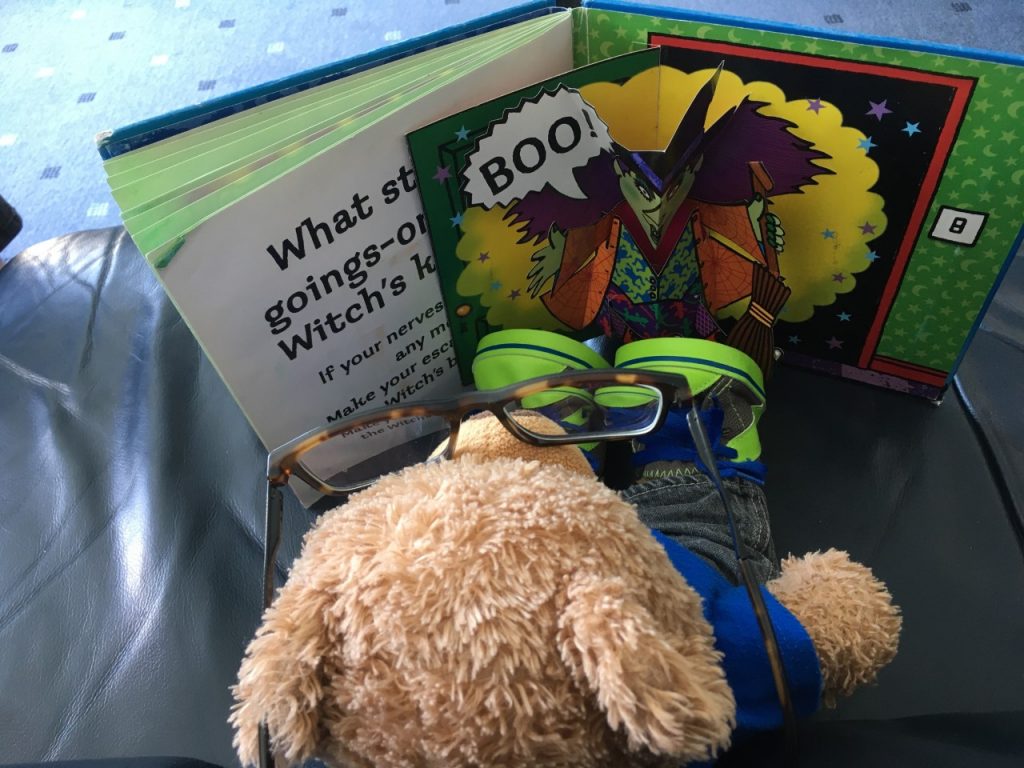How nurseries show community leadership and create happier local neighbourhoods
by Mona Sakr Nurseries are at the heart of enabling children to positively contribute to the communities they live in. Through their work with children
It was extremely hard and emotional to say goodbye to the children and parents in my Reception class at the end of the day, before our school closed to all but a small number of children, due to the Coronavirus pandemic. We did not know when we would see each other again, and I am not ashamed to say that there were tears with parents as they left with their children. We shared how much we appreciated and cared for each other, and we wished each other safe and well, as we said goodbye. The situation made us all a little afraid and worried, as we did not know how long life would continue in this way or when we could return to normal.
Since then, we have all remained connected at a distance, following the need for the children’s learning experiences to be continued at home in the absence of school. Ideas for home learning have been suggested on our school website, and I follow up with twice weekly ‘keeping in touch’ e-mails with parents. A ‘menu’ providing a selection of activities to choose from has been made available to families, along with reminder updates every few days, suggesting some of the options, and offering something new. For example, an easy to follow recipe. This appears to be working well for our families, who talk about their children’s (and their own) enjoyment and engagement with learning at home:
Musa’s mum shared her enthusiasm in the following message:
“We really like the idea you give us about painting, and we paint today with fingers and thumb. I really like that we don’t need too much brushes and gadgets to paint. It’s simple and fun way to paint. Kids love it and I enjoy more than kids. Thank you.”
Children have engaged in many practical early years experiences with their families whilst learning at home, following their interests through play and engaging together in reading, singing, baking, drawing, painting, making and planting; the real-life, contextual, authentic and meaningful experiences that help them to continue to make sense of the world.
It was important to reassure children and families at the outset that home learning would not come as an additional pressure during this uncertain time. There is no insistence that anything must be completed or ‘produced’ to confirm that learning is taking place at home, and all suggestions offer families contextual, fun, and easily accessible learning experiences.
Alongside the suggestions, children also have on-line access to reading, maths and literacy apps, and ideas for stories and a Rhyme of the Week, are also provided, following the routine that the children and parents are familiar with at school. Those who keep in touch regularly are always eager to share their efforts from the learning suggestions. Some parents are in daily e-mail contact, providing home learning updates and sharing their children’s success with photographs and anecdotes. Others have also asked questions about how they should explain ideas or ‘teach’ their children new things. A question from Owais’s mum, about his struggle to understand the composition of numbers between 11 and 20, developed into a longer conversation about the reasons for and a possible solution to support his understanding.
The conversation began with Owais’s mum’s concern with his difficulty representing numbers in written form:
“Owais write 1 – 40, he struggles a bit at 13-30, 14-40, 15-50, and so on till 19-90. I don’t know why but I just found out this today. Is it something I need to worry about? Because I am worried why is hard for him…?? Apart from 12 and he write 21 :-(”
In my reply, I tried to ease Owais’s mum’s worries by providing, as simply as I could, a possible reason for his misunderstanding:
“It’s absolutely nothing to worry about, please so don’t panic!!
The ‘teen’ numbers and those beyond can be confusing for children when they are learning numbers, which also explains why children sometimes ‘reverse’ the order of numbers as Owais has done with 12. I’ll try to explain, but I’m sorry if I confuse you… Hope not…
The numbers after 10 have the names we give them in English (eleven, twelve, etc. etc.), and we just have to learn to know how many those number names represent, but in some other number systems around the world they are labelled differently, and show the pattern of numbers by how many ‘tens’ and how many ‘ones’ they have…
They call 11 ten one, 12 is ten two, 13 is ten three etc. which helps when learning to understand how numbers are made up.
That’s where Numicon helps, as children can see that 13 is made up of one lot of 10, and then 3 ‘ones’ (does that make sense??) and can be shown like this:”
The reply goes on to give further support and ideas…
The explanation appeared to be useful. Owais’s mum replied, saying that she understood why Owais found some number labels difficult, and was very appreciative:
“I need to say thank u so much for explaining me. I understand everything. I’m trying hard to make him understand and yeah today he was doing right. I was so happy.”
Another message followed a few days later:
“Today he was much better then yesterday. I’m so happy that Owais can now differentiate between “teen” numbers and the others that sound same.”
One of the ways I have been keeping in touch with the children and families is through the home news feed on our online pedagogical and progress-mapping tool, called the Development Map, which enables conversations and photographs to be easily shared between home and school. I use this as a regular form of contact with parents (see below).
It is an easy step to create Learning Stories from the home news feed, which include conversations with children and parents. They show the serve and return discussions we share to support children’s learning and maintain a dialogue which also supports each child and family’s wellbeing. This is also an opportunity to make suggestions, ask possibility questions or reflective comments to build on and extend experiences and learning.
The stories become a central part of the connection between home and school, especially at the current time, and they underpin authentic, collaborative partnerships with parents, which are characterised by every day, natural, conversations about the real lives of the children and their families. The Every Child a Talker (ECAT) “stepped approach” to engaging parents and carers, explains this philosophy very well (DCSF, 2008, p. 96):

Step three: engaged partners Parents who are fully empowered and engaged not only consult and comment on what is best for their child, but are confident, proactive partners alongside practitioners, supporting their children to develop speech, language and communication skills at home, in the Early Years setting and elsewhere.
Parents become “Engaged Partners” when practitioners/teachers genuinely get to know them and their children very well. They are naturally aware of children’s interests, and the personal make-up of their family within the community to which they belong, such as their culture, religion, home language, and immediate or extended family. This makes supporting learning, which sits within a context that is valued and appreciated, a shared and powerful experience.
There is a real sense of friendship, support, advice, and shared thinking, which has such a positive impact on children’s learning, especially their language development. Everyone is learning during these reciprocal conversations. I am constantly learning more about the home culture of my families, and how this informs my understanding and teaching, and parents are learning how to support their children’s learning. Parents benefit from modelling of conversational language and how this underpins children’s development and learning. Where parents and children are learning English as an additional language and becoming multi-lingual, they in turn will pass this skill and understanding on to their wider families. This also has positive implications for their future success, as Field (2010, p. 5) points out:
It is family background, parental education, good parenting and the opportunities for learning and development in those crucial years that together matter more to children than money, in determining whether their potential is realised in adult life.
Parents have really risen to the challenge of continuing to support their children’s learning at home and are enjoying it. The present situation has led to alternative ways of working and communicating with each other, and has helped me form closer, bespoke relationships with children, with dedicated one-to-one opportunities to support their learning. We may see each other less, but the quality of the time spent in this serve and return dialogue is hugely beneficial for everyone involved. Out of this awful pandemic come some creative and meaningful experiences, as Julie Harmieson, Co-Director of Trauma Informed Schools, said during a recent webinar presentation:
“…from adversity comes great learning that we can apply and take forward.”
This is certainly true.
A recent conversation on the home news feed began with Owais’s Mum’s excitement that the bean that Owais had planted at school had started growing:
“Owais’s kidney bean is growing!”
I sent a further planting suggestion and information about what to expect from the bean’s growing cycle, to maintain Owais’s interest and encourage the continuation of his learning:
“It’s great to see that Owais’s bean is growing – I wonder if it could be transferred to a pot of soil now that it has roots and a shoot? As it grows taller, perhaps Owais could start to measure it with a ruler or tape measure to see how tall it gets? He could write down his results each time he measures it and see how much taller it is getting each time? It might even grow taller than him eventually. I would love to see and hear how he gets on with that!”
“Don’t forget Owais that you can also plant your sunflower seed that was included in the home learning pack. I would love to see some photos of you doing that and what you think about it as you watch it grow!”
This dialogue was easily converted into a story using the Development Map and sent back to Owais and his family via the home news feed. It values the learning experience and conversation and is a great record of learning and engagement between home and school.

Owais subsequently planted his sunflower seed and a selection of herbs too.
Another conversation began with Musa’s mum’s explanation of Musa’s recent dream, following his last days at school:
“Good morning Mr Yates. Have a good day. Hope you okay and Musa said he see a dream that he goes to school and hug you. He was so happy to tell me about his dream he said he miss his friends and you. Musa find lady bird yesterday while playing in the garden and he put lady bird on his hand.”
This was good to hear. I acknowledged Musa’s feelings by sending him a virtual hug back, and sharing optimistic thoughts for being back at school:
“What a lovely dream, Musa! I really do hope your dream comes true very soon – I can’t wait to share a real big hug when we go back to Jade class! I miss you and everyone else very much too. Sending you a great big hug back!! It’s lovely to see that you found a ladybird – a nice surprise!”
Once again, this was quickly turned into a story and sent back to Musa and his family.

Musa clearly appreciated the story, as his mum’s next reply confirms:
“Hello Mr Yates. Thank you so much I show your hug to Musa. He said thank you and he show to his dad in a joy.”
In a subsequent conversation I shared my own ladybird find with Musa, which linked our shared experience and made it more special:
“Guess what, Musa? I found a ladybird outside today too! It reminded me of when you found the ladybird in your garden, so I took a picture to show you!”
This was, again, shared as a story with Musa and his mum.

The stories value each learning experience and conversation, and show how continued, meaningful conversations are central to supporting children’s learning and understanding. The flow of the conversations, where ideas are reciprocal, co-constructed and extended, become collaborative episodes of sustained, shared thinking between parents, children, and teachers. They also support literacy and an enjoyment of reading together.
I have called (via mobile) most of my families to catch up with them, make sure that they were all in good health and coping with the new expectations they suddenly face. It has been crucial to be able to respond personally to children and parents, either by e-mail, or in telephone conversations, to offer words of reassurance, support, or encouragement during this unprecedented time. They have all said how much they and the children are missing being at school and appear to have welcomed the opportunity to be able to stay in touch. I believe that, because of this, the strong relationships we enjoy have become even stronger.
It is truly heartening to see the children adapting to a different way of learning away from school, and their parents’ strength and resilience in suddenly taking on a new ‘edu-care’ role; a reminder that, in the EYFS, we acknowledge the family and home as children’s first educators. It is the children who help me to continue smiling with them and their parents. Musa’s mum caringly stated:
“We all try to enjoy our time and try not to panic because of coronavirus.”
She said of her children:
“They made me laugh so much. Because of them I forget what’s happening in the world.”
Children keep us grounded. During this uncertain time, they reminded us why we are all working so hard to practise social distancing – we do it for them and their future. I smile reassuringly at the photographs I receive from children and families, showing children enjoying exercises and races outdoors, baking buns and biscuits with their siblings, hunting for minibeasts, and creating rainbows of hope, to display in their windows as a symbols of optimism to bring everyone together. I faithfully respond to every message I receive from my families, to maintain the strong and authentic partnerships that I know are vital, especially during such an unprecedented time. Maintaining links with each other, and keeping the conversations going, is essential. It also helps children and parents to realise that they are certainly not forgotten.
Our conversations have encompassed a variety of emotions and sentiments at a challenging time in everyone’s lives. Everyone’s well-being, mental health, and seeing the positive moments, is the central focus of home learning at this time. I have shared many of these moments through the home news feed and Learning Stories – they will provide important memories further down the line. Comments from parents are testament to this:
Craig’s mum wrote:
“Home learning is going on well. We’re trying. But you teachers do a great job. We still miss you too, our brilliant teacher. Definitely, you are the best. We get inspired by you. We cannot wait to see them back to school.”
Other parents have sent messages from the children, one in reply to an e-mail in which I shared photographs of Jade Bear, our class teddy, reading our favourite class stories from school. Haider’s mum said:
“Haider was very happy to hear from you and see Jade Bear reading his favourite books. He says he “can’t wait to come back to Jade class and you’re the best teacher in the world!”

In a subsequent message, Haider, who was eager to share his home learning, said:
“Mr Yates my mum ordered me Supertato books and I really like them! I hope you like my mask…I’m sad school is shut and I miss you and Jade class!”

Musa’s mum offered recipes for food during the holy month of Ramadan, during which people of Muslim faith fast during the daytime, before celebrating Eid at the end of the month, saying:
“Ramzan fast are hard and long but we are used to it now. No worries, you can enjoy Ramzan with us. I’m gonna send you recipes for pakoras n things we make in Ramzan. You can make n eat in Ramadan”.
The praise and appreciation, although gratefully received, has not led to a feeling of complacency. Instead, it has made me resolve to continue to remain positive and hopeful. If messages continue to arrive, I will continue to appreciate and respond to them. If questions are asked, I will continue to do my best to answer them as sincerely I can to help families continue to support and encourage their children’s learning at home.
My own wish for the future is that extensive thought and consideration will be given to children’s and families’ well-being as we return to school. We are all affected by the current situation and will welcome a return to some sort of familiarity and security as soon as possible. I feel that it is important is for children and families to return to the familiarity of the same classroom, teacher and friends they said goodbye to at the end of March, after many weeks and months of uncertainty – thinking especially about those with SEND and our youngest children in FS1 and FS2, before thinking about the transitions they will be making into their new year groups.
I sincerely hope that this will be possible.
(With thanks, as always, to Owais, Musa, Haider and Craig and their families, for giving permission for their photographs and thoughts to be shared.)
David Yates is a Reception Teacher at Tinsley Meadows Primary Academy, Sheffield and Secretary of the Early Education, South Yorkshire Branch
Department for Children, Schools and Families (2008) Every Child a Talker: Guidance for early Language Lead Practitioners. Nottingham: DCSF Publications.
Field, F. (2010) The Foundation Years: Preventing poor children becoming poor adults. The report of the Independent Review on Poverty and Life Chances. London: Crown Copyright.

by Mona Sakr Nurseries are at the heart of enabling children to positively contribute to the communities they live in. Through their work with children
The Families’ Access to Nature Project was undertaken by the Froebel Trust and Early Education between October 2021 and January 2022. Children, their parents, and
ICT – what’s it all about? ICT is information and communications technology. The term simply means all the technology around us, things like mobile phones,
Toddlers are very busy people. They are keen to learn about the world around them and ready to be fascinated by things that seem ordinary
Children’s curiosity about the world around them is apparent from the day they are born. Babies quickly use all their senses to explore themselves and
Reading is fun. It’s also a key skill that helps us to learn and to live our lives – so starting to read is an
What? Why? When? Where? What for? – and Why? yet again. Sometimes children’s questions just keep on coming. It can be wearing, especially if you
It’s true, maths really is everywhere, and learning about it doesn’t happen just at school or nursery. Young children have lots of important mathematical experiences
What is mark making? Mark making is the term used to describe the marks that children in their early years make on paper and is
The role of music in the early years Everyone knows how much young children love to sing and dance, but all too often music is
Children learn how to behave All children are individuals, because they are born with their own character. This is why even children within the same
Early childhood seems like a time of constant change to adults. Just as you’ve got used to a predictable daytime nap, your child decides that
Why go outside? Big movers Have you ever been in an open space with young children? The first thing they want to do is to
Young children are artists. They use all sorts of materials to show what they have noticed about the world. They might draw the rain falling
Taking care of a baby is tiring work, with a lot of feeding, nappies and broken nights. When you are exhausted, it can be harder
This page brings together useful resources for supporting families with home-learning while settings and schools are closed during COVID-19 restrictions. See also: Twelve links for
Here are twelve links with free ideas to support play and learning at home, suitable for early years, nursery, reception and school aged children in
It is important to include families in helping to shape your decisions in relation to developments you want to make. Families know their circumstances best
Since the introduction of the EYFS framework in 2008 there has been a huge emphasis upon encouraging parents to become engaged in their children’s learning.
The Duchess of Cambridge launched The Royal Foundation Centre for Early Childhood on 18th June 2021 with a substantial report Big change starts small which identifies six









Early Education
2 Victoria Square
St Albans
AL1 3TF
T: 01727 884925
E: office@early-education.org.uk